|
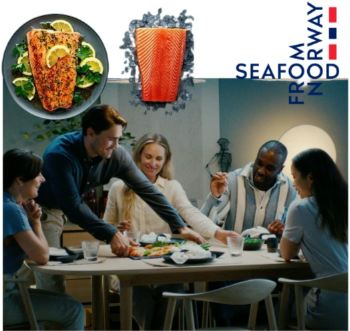
Photo: Norwegian Seafood Council
Norwegians think price and proteins are most important
 NORWAY
NORWAY
Tuesday, June 18, 2024, 01:00 (GMT + 9)
In a year characterized by war in Europe and expensive times, it is not surprising that Norwegians' eating habits are influenced by the price of groceries and less commitment to climate and the environment. We have taken a look at Norwegian Food Facts 2023–2024 from Ipsos, and Norwegians' relationship to seafood, proteins, health and food culture.
Most people think food is too expensive
The past year has been characterized by more expensive foodstuffs and a general rise in prices. That almost half the population now believes that food has become too expensive is perhaps not surprising. Eating facts reveal that especially healthy food is perceived as an expensive alternative, which has a decisive effect on products that are already perceived as expensive.
.jpg)
In the list of particularly important factors when buying food, Norwegians believe that the most important are:
- the food is fresh or fresh
- the food has a low price
- the food is healthy
- the food is produced in Norway
- the food comes from natural ingredients
Low price is one of the most important factors. And the perception of seafood and other protein sources is also affected by the price changes: Far fewer people now see meat or fish as cheap, regardless of the type of food in question. More meat is still eaten than seafood, and an important reason for this is a price increase of over 50% for seafood since 2015. Meat, on the other hand, has had a price increase of only 30% in the same time period.
Health and well-being motivate physical activity, but not necessarily a good diet
Health and wellness are still important, but what is perceived as healthy has gradually changed. The importance of living healthy and being in good physical shape has risen steadily since 2011, and continues to rise. But it is to a large extent physical and mental surplus, as well as the prevention of health damage, which now motivates more people to physical activity.

The same arguments no longer motivate as many people to think about diet. More than half of the population is still very or fairly interested in a healthy diet, but interest has been falling since 2017.
White fish is the food that is perceived as by far the healthiest, ahead of alternatives such as chicken, red fish, pork or beef. It is also white fish that is perceived as the safest food to eat, compared to other protein sources.
Young adults are more concerned with proteins
There is a growing tendency for more people to choose protein-rich food when shopping. Next to "low price", "high protein content" was actually the option in the survey that increased the most from 2021 to 2023. It is the young people who are most interested in eating proteins: As many as 32% in the age group 15-24 have "high protein -content" that drives the purchase of food products.
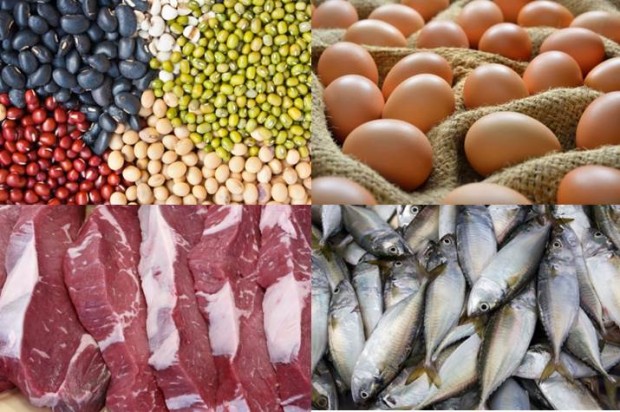
At the same time that proteins are becoming more important, fewer people are trying to avoid meat, and the number of Norwegians who are vegetarians remains low. There are also fewer people who choose fish as the main course for dinner - meat is the favourite. From 2013–2023, Norwegians' fish dinners have decreased from 101 to 89 a year.
Other findings for fish and seafood:
- Salmon, trout and cod are the most commonly eaten fish
- Both freshly packed fish and frozen fish or fish fillets have increased slightly over time
- Fish cakes are the most popular processed fish product
- Red fish is perceived as quicker and easier to prepare than white fish
Those who eat the most fish are women. It is the oldest people who still eat the most fish in Norway, and state that they eat it approximately 3 times per week.

Increased focus on protein can be good for seafood consumption
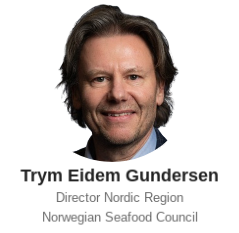 Trym Eidem Gundersen, Director Nordic, at the Norwegian Seafood Council, believes that the popularity of proteins can also be positive for seafood consumption. Trym Eidem Gundersen, Director Nordic, at the Norwegian Seafood Council, believes that the popularity of proteins can also be positive for seafood consumption.
- Fish and shellfish are rich in many nutrients, and not least protein, and should therefore be an obvious alternative on the plate, he notes.
Fish and shellfish can cover the need for many of the most important nutrients we need.
- With a population that is becoming more and more interested in eating enough protein at the same time as fish consumption is decreasing, it is important to try to see what opportunities this gives us. Seafood can take up more space on the plate, for example with more focus on protein and nutrient content, says Gundersen.
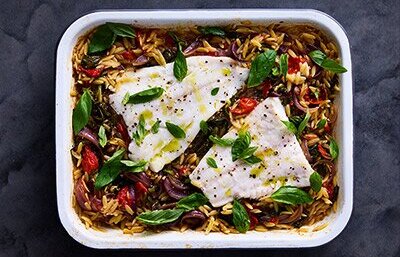 Some of the most protein-rich seafood we have are prawns, crab and mackerel. Fish such as salmon and cod are also rich in protein. In addition, this seafood has large amounts of other important nutrients. Crab, for example, has a high content of iodine, and more calcium than low-fat milk! Some of the most protein-rich seafood we have are prawns, crab and mackerel. Fish such as salmon and cod are also rich in protein. In addition, this seafood has large amounts of other important nutrients. Crab, for example, has a high content of iodine, and more calcium than low-fat milk!
- It may be crucial to shed light on how seafood can cover the need for protein and other vitamins and minerals, in order to highlight fish and shellfish as a dinner option. With a high content of omega-3, calcium and vitamin D in addition to protein, many types of seafood can provide a more complete and nutritious meal, says Gundersen.
In 2022, the Science Committee for Food and Environment (VKM) also concluded that precisely because of the amount of nutrients in fish, it was recommended for Norwegians to increase their intake. The benefit of ingesting nutrients from fish outweighs any risk and inconvenience of ingesting unwanted environmental toxins.
Ultra-processed food is a new concern
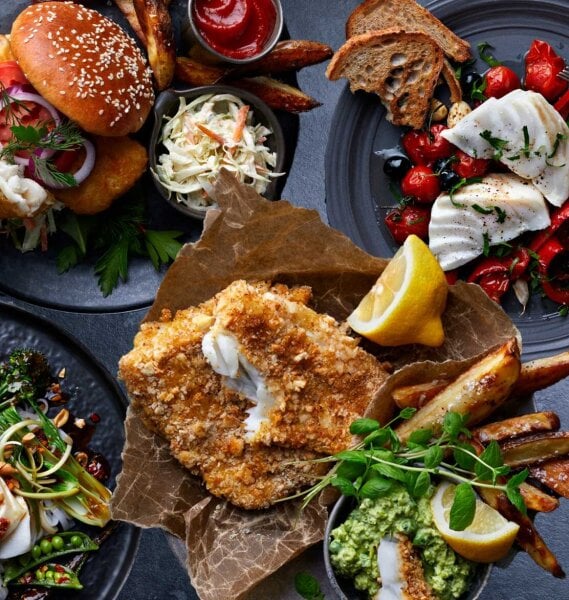 Eating facts also show that Norwegians have a growing skepticism about ultra-processed food. New in this year's survey is that "ultra-processed food" has been added to the selection, and together with sugar and alcohol, it is something most people are keen to limit their intake of. Eating facts also show that Norwegians have a growing skepticism about ultra-processed food. New in this year's survey is that "ultra-processed food" has been added to the selection, and together with sugar and alcohol, it is something most people are keen to limit their intake of.
The alternative "ultra-processed food" is actually the second biggest concern and the type of food that many people want to avoid.
The concern about ultra-processed food can give fresh seafood the opportunity to be a favorable alternative for more people. An increased emphasis on fish and shellfish as natural raw materials, without too much processing during production, can be a good argument.
Norwegian origin is decisive for many
Many consumers still think it is important that the food they eat is of Norwegian origin, even if the importance of choosing environmentally friendly is falling. The general environmental concern among Norwegians falls for the second measurement in a row, even though as many as half the population still believe that the environmental situation is serious. It is largely the pandemic, war in Europe and rising prices that have shifted our attention away from questions about the environment, climate and ecology.
Norwegian origin, on the other hand, is just as important to many, despite expensive times and rising prices. The willingness to actually pay for short-distance food is still falling, although many still believe it is an important factor when they choose food. The fact that many people are concerned about the food being of Norwegian origin can also be good for seafood consumption in Norway.

Healthy food must come from natural ingredients
Two out of three believe that for food to be called healthy, it must contain "natural ingredients". Most women believe that natural ingredients must be part of what we can call "healthy food".

Gundersen believes that natural raw materials play such a big role for many.
- Fresh fish and shellfish are natural ingredients. If you are concerned that the food you eat comes from natural ingredients, it should be obvious to choose seafood, says Gundersen.

Inspiration from other countries: Sushi and Japanese food are increasing the most
Interest in Norwegian food and fish for dinner is steadily falling, especially among young people. It is therefore positive to see that of all dinner dishes and types of food, it is Japanese sushi and sashimi that has the highest increase in the survey, compared to previous figures.
Of all those who answered that they eat sushi or sashimi for dinner, more than 50% also stated that they chose this because they wanted to have a little extra fun. Shellfish comes in third place among foods people choose when they want to enjoy themselves.
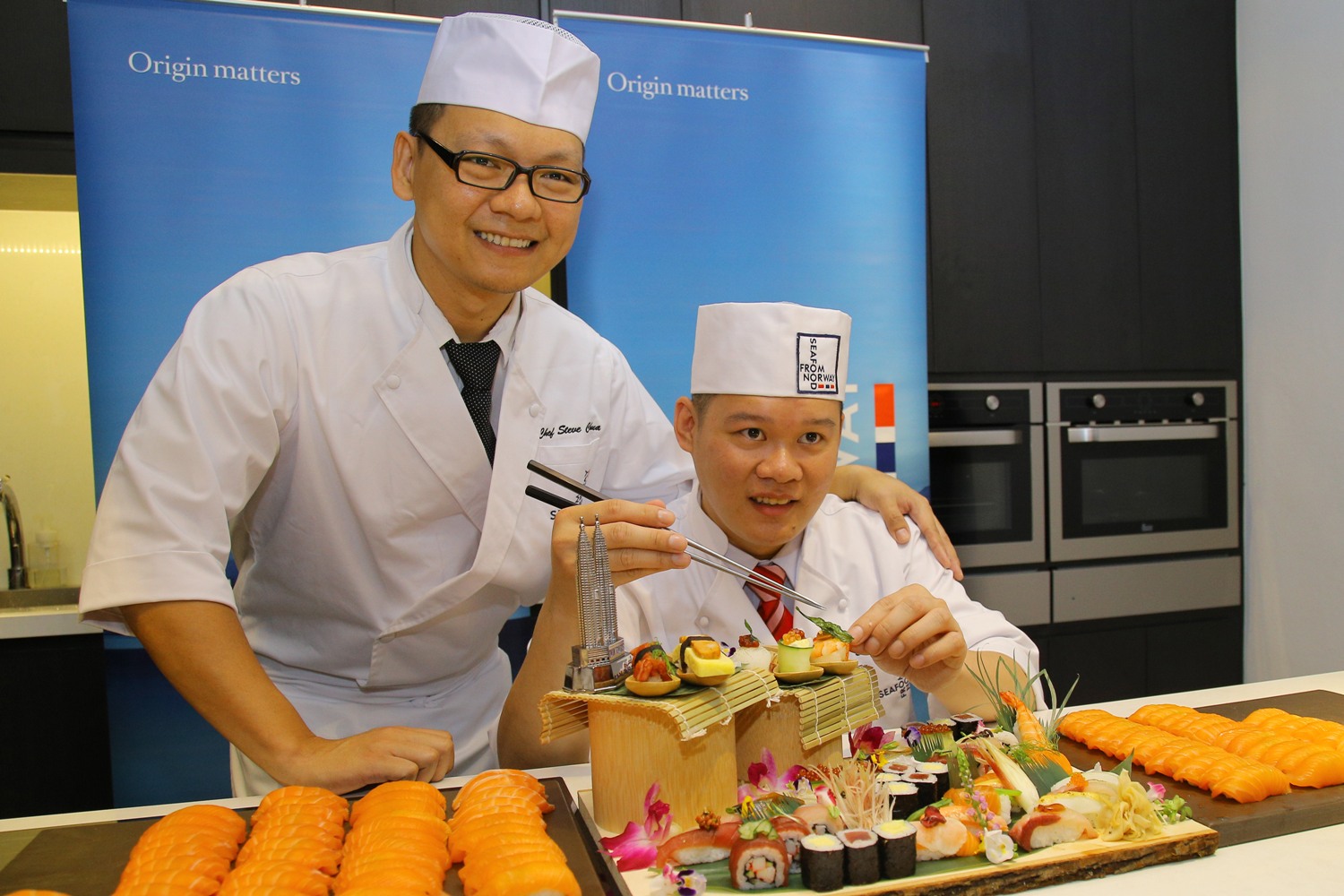
- Inspiration from other food cultures can be a great opportunity for Norwegian fish and shellfish to shine, and is something we work a lot with at godfisk.no. The fact that seafood is also a popular choice when people want to treat themselves to something extra good is very positive, says Gundersen.
He is also optimistic about how this trend can develop in the long term.
- More demand for short-haul seafood of good quality for dishes such as sushi and sashimi should contribute to a more positive development of fish for dinner in the future, says Gundersen.
Source: Norwegian Seafood Council (translated from original in Norwegian)
[email protected]
www.seafood.media
|



